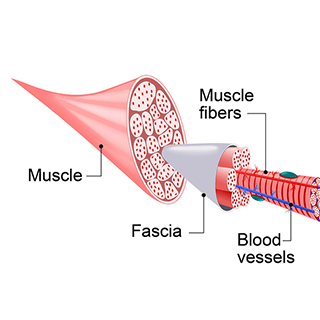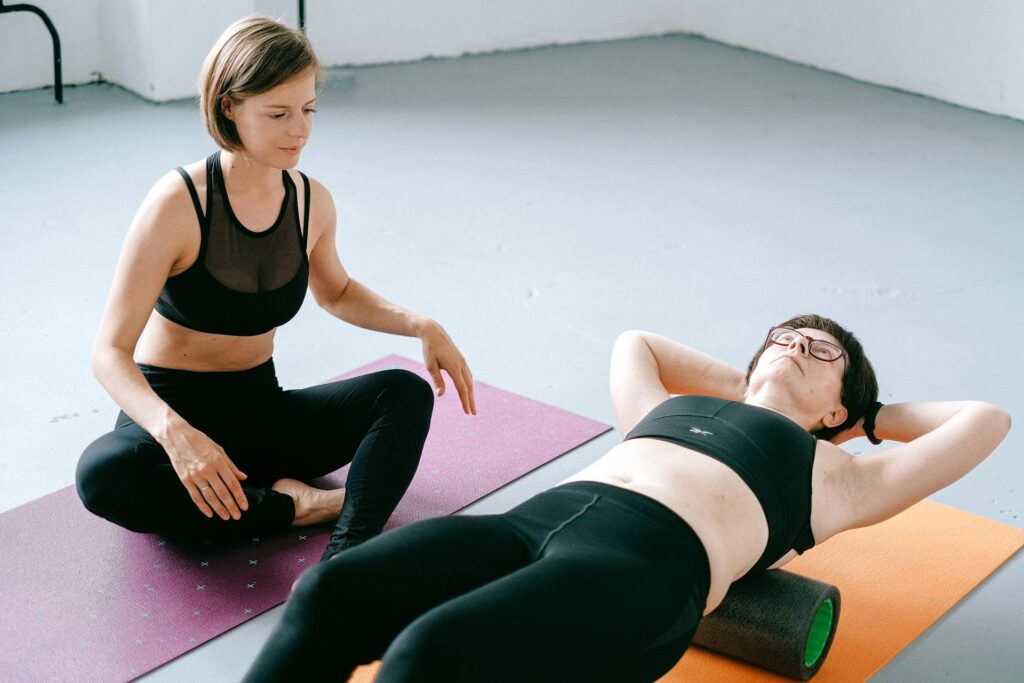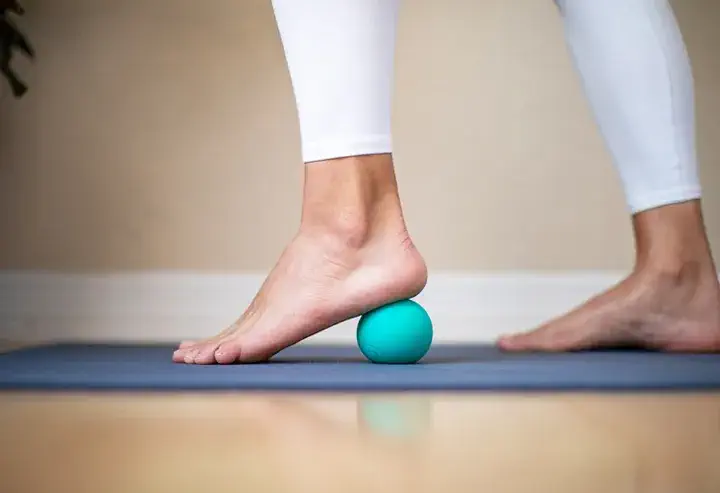As you go about your day, you notice the tension building up in your shoulders from hours of sitting at your desk, or perhaps you feel the strain in your legs from yesterday’s workout. It’s as if your body is sending out an SOS, begging for relief.
For me, this feeling was all too familiar. As someone who spends most of my days hunched over a computer screen, I’ve experienced first-hand the toll that this sedentary lifestyle can take on the body. I used to love hitting the gym and going for runs, but lately, my workouts had become more of a chore than a pleasure. No matter how much I stretched or rested, the tightness in my muscles just wouldn’t go away.
Then, one day, a friend of mine asked, “Have you tried rolling over a lacrosse ball?”
Little did I know, this simple suggestion would change my life. And it might also change yours.
Why You Need to Release It:

A diagram showing where the fascia is located. Image by Deep Recovery
Fascia — it’s not just a thin casing of connective tissue; it’s a dynamic network that surrounds and supports every organ, blood vessel, bone, nerve fiber, and muscle in your body. Remarkably, fascia is equipped with nerves that make it almost as sensitive as your skin. However, when stressed, it tightens up, leading to pain, stiffness, and decreased mobility.
In simpler terms, fascia is the unsung hero of your body, silently working behind the scenes to support and protect your muscles, organs, and bones. But when it becomes tight or restricted, it can wreak havoc on your body.
Athletes have long recognized the benefits of myofascial release for enhancing performance, preventing injuries, and speeding up recovery times. Yet, these benefits extend far beyond the realm of sports.
Whether you’re a desk-bound worker, a weekend warrior, or simply someone who wants to feel better in your body, myofascial release can offer significant improvements to your posture, reduce muscle aches, and enhance overall well-being.
And these are just the beginning of the benefits.
How to do it?
There are countless methods to integrate myofascial release into your routine, whether you opt for professional assistance or prefer self-care techniques at home. Below are some of the techniques that have personally yielded benefits for me and for you to get started with.
1) Professional:

Massage Therapy: This is one of the most common methods of myofascial release, where a licensed therapist uses their hands to manipulate and stretch the fascia, releasing tension and promoting relaxation. If you are currently experiencing intense pain or have underlying medical conditions, I highly recommend seeking the expertise of a licensed therapist.
2) Self-Care Techniques:
There are several cost-efficient methods you can adopt at home.

Foam Rolling: This popular option involves using a foam roller to apply pressure to tight areas of your body, aiding in breaking up adhesions and improving mobility.

Stretching: An essential component of myofascial release, stretching helps lengthen tight muscles and improve flexibility.

Trigger Point Therapy: This technique targets specific areas of tension or knots in your muscles with focused pressure. You can utilize tools such as massage balls or lacrosse balls for this purpose.
Regardless of the method you choose, consistency and discipline are paramount. While a single session may provide short-term relief, maintaining a healthy, pain-free body requires regular practice.
As you’ve likely heard countless times before, consistency truly is the key.
Start by dedicating 10–15 minutes of your day to myofascial release, beginning with once a week and gradually progressing to 2–3 days per week.
While more frequent sessions yield greater benefits, be cautious not to overdo it during each session.
Final Thoughts
As you’ve discovered, myofascial release is not just a luxury reserved for elite athletes — Whether you’re a desk-bound worker feeling the strain of long hours sitting at a computer, an athlete looking to enhance performance and prevent injuries, or simply someone who wants to feel better in their body, myofascial release has something to offer you.
So why wait any longer! Start rolling your body over a lacrosse ball and it will thank you for it, perhaps sooner than you realise.
Disclaimer: Before embarking on any exercise program, including the techniques discussed in this article, it is imperative to seek guidance from a qualified healthcare professional or physical therapist, particularly if you have any pre-existing medical conditions or concerns. The exercises outlined here are general recommendations and may not be suitable for everyone. Listen your body’s signals, initiate movements gradually, and progress cautiously to prevent injury. Should you experience any pain or discomfort during exercise, stop the activity immediately and consult with a medical professional if necessary.
